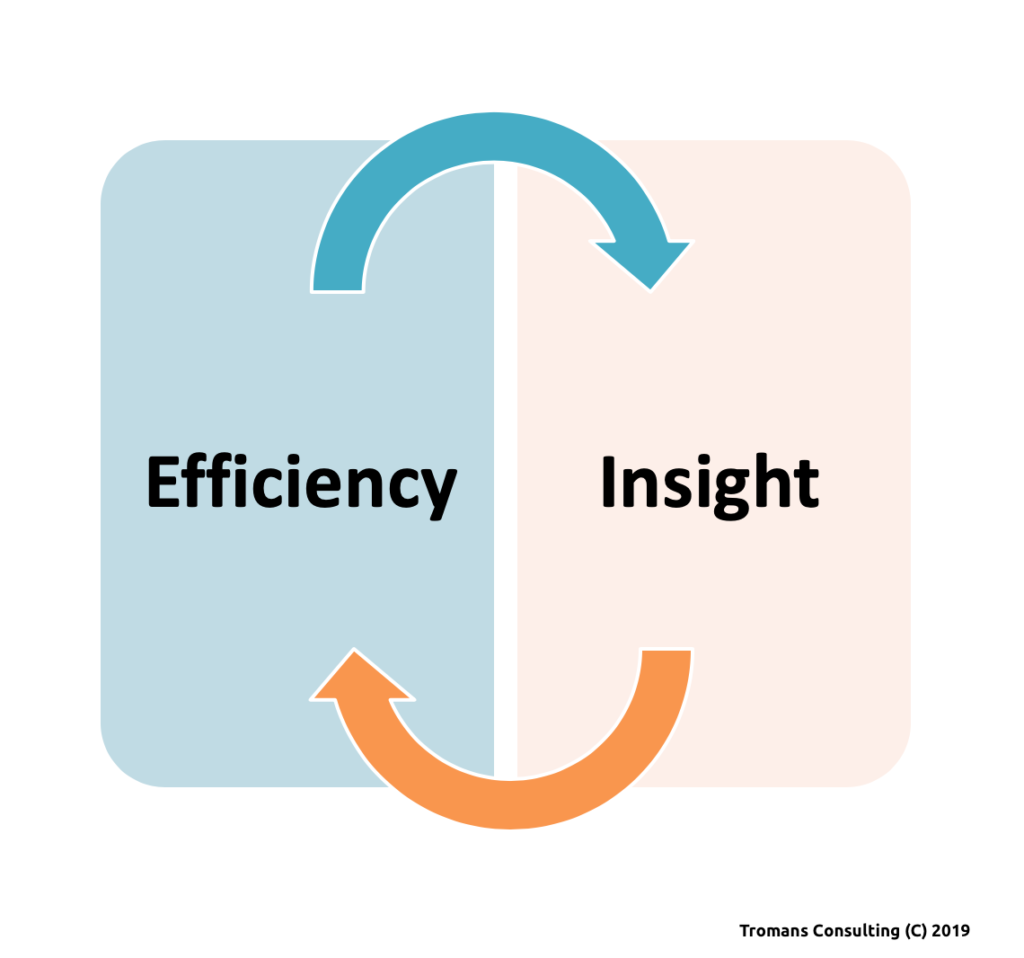
Is there a middle way when it comes to legal technology? Can law firms leverage the latest innovations in automation and still use all the operational tech they need? Can tech be properly balanced with people and process when it comes to legal services delivery? Artificial Lawyer believes the answer to all those questions is a resounding: yes.
Let me explain.
For many years legal technology just did its thing. Lawyers didn’t pay it much attention as long as it seemed to work. Lawyers wanted email, a document storage system, a billing platform, some sort of digital library for KM and so on. They didn’t explicitly ask for anything more and didn’t expect there would be anything else either. This was the world of legal technology for a very long time. And then something happened.
What happened was a new wave of technology arrived that fundamentally centred around the idea that you can automate aspects of legal work. This could be:
- A workflow system that has been pre-designed to guide a lawyer through a deal closing and that puts in place a new digital infrastructure that speeds up the process and removes inefficiencies.
- It could be an expert system that crystallises a law firm’s knowledge in a certain area and then serves it up again with an automated platform for internal use, or for clients externally.
- Maybe it is a system that uses NLP and ML to help a lawyer review a large number of documents very quickly (also known as legal AI). Or perhaps using this tech to analyse a contract for risk levels based on pre-designed benchmarks.
- Or, maybe the lawyers are using another type of AI system that generates new natural language legal text to respond to a legal document they have received, or to generate for example a patent application.
- And, maybe they are using the NLP and ML technology to improve research and even make predictions on future outcomes, ranging from cost and time of a matter, to even how a certain judge may respond to a certain legal argument.
- And there is more…..ranging from really trying to use document automation at scale, to digital contracting platforms that allow parties to create more standardised agreements in the first place, to then capturing all that legal data from the digital processes to gain business and legal knowledge that was not seen before.
And, all of it has something in common: a reduction in inefficiency and an increase in insight into legal data.
And this is a good thing. Without doubt. And it is increasingly less a novelty today and now simply part of an integrated legal tech landscape for a growing number of legal services businesses and inhouse legal teams.
The Problem
If you’ve had a lot of experience of the above applications you may ask: what’s not to like? What could possibly be the problem here? Isn’t this just sensible, useful technology that enables a lawyer to work smarter and do more for their firm and their clients?
Well, yes…..But, no, it hasn’t been that simple.
Issue One: the belief that any of the above applications that relate to automation and improved workflows are somehow an answer in and of themselves, rather than part of a much larger integrated approach to legal services delivery. A doc review system without the right supporting tech and processes and people in place is about as much use as a Ferrari without any petrol, or a qualified driver. This is when issue one often manifests itself, i.e. people buy an application ‘off the shelf’ without thinking through the bigger picture and then, surprise…!, it doesn’t all go smoothly.
And, issue one is not a surprise. Lawyers have not spent a lot of time thinking about legal tech as a strategic tool that actually integrates with how they produce work, as opposed to an operational support that ‘allows’ them to do their work.
Issue Two: the other challenge is that because it looks like this tech isn’t as simple as plug and play, that because it may not meet over-elevated expectations, that because it needs to be part of a bigger strategy around service delivery (and that looks complicated), that it’s better to just focus on tried and true operational technology and ignore automation or fancy new tools.
And, again, this is not surprising. If you are used to things ‘just working’, e.g. such as your email, then when you find out an automated workflow will need engagement from not just the IT team, but the lawyers as well, because this is about making legal work for clients with aspects of automation and hence needs this hybrid mix of skills, it is no longer easy. And that can lead to disillusionment and people backing away.
But, to ignore this new wave of technology is a retreat into the 1990s of early legal tech. It is a bit like Brexit – it’s trying to find a way back to the past that doesn’t exist any longer. Better use of operational tech, (even improved touch typing skills…), will all improve efficiency and should be encouraged…….but, that isn’t going to allow you to perform a massive due diligence task super-rapidly. It won’t enable automated self-service of standard legal docs. It won’t improve the efficiency of deal closing.
The practical reality is we need all things that contribute to greater efficiency: not just new ones, not just old ones. But, all of it.
Why Automation Matters
There has never been a time when the macro-economic picture for the legal services sector was more connected to driving greater efficiency than now. In short, inefficiency costs money and time, and market expectations are changing. The legal world has to move with this. Simple as that.
And, even with the best operational tech out there, and skilled lawyers, and good processes, there is a limit to how efficient you can be without bringing in automation.
No law firm would operate today without a DMS – and use filing cabinets filled with paper, or not use email – and rely on faxes and letters, and not use word processing instead of typing out legal documents on paper, perhaps with a carbon copy sheet underneath and a big pot of Tipex on the desk.
So too, it will soon appear equally odd not to be using automation technology as and when needed, in every aspect of a lawyer’s work – and exactly for the same reasons. I.e. to do otherwise is needlessly inefficient.
The Middle Way: How Do We Get There?
Clearly then there has to be a middle way. We need ALL legal services businesses and inhouse teams to embrace automation, from workflow and deal platforms, to expert systems, to doc review and more, ….and not just parts of the world’s largest law firms.
We need the entire legal market to embrace this added efficiency, just as they embraced Microsoft Word many years ago. It’s really all just part of the same story. There’s nothing that fancy about it. You can call it AI, legal automation, or whatever you want to call it, but, it’s basically just two things: more efficiency and more insight – working together as an integrated process within a wider, also integrated legal services delivery model.
But, how do we get there? How do we plot a middle way that avoids lawyers thinking that a point solution, or new shiny thing is the answer to all their prayers? Equally, how do we convince the ‘Anti-Vax’ wing of the legal world that just because a lot of new tech is not 100% perfect, or not simply plug and play, that it still has enormous value and merit?
It’s something that Artificial Lawyer has spent a lot of time considering. This site has always sought to provide a ‘middle way’, navigating between the hype and cynicism. It does this because, as someone who came to legal technology through the world of business improvement and change management, it’s completely obvious that this technology is, on a very practical basis, useful and delivers value. In short, it helps change the legal services delivery model for the better.
So, how do we get this across to a wider audience? The answer has to be the following:
- We have to continue with the educational aspect, as buyers cannot make choices until they know what is out there and what it does,
- BUT, vendors, those using the tech, and sites like this, need to keep up the message that any and all of this new technology is just part of a greater whole, a wider integrated model. To paraphrase the poet John Donne: ‘No legal tech application is an island.‘ Nothing mentioned above can deliver maximum value on its own. There is no magic box where you press a button and everything is done for you.
And, that is now what Artificial Lawyer is going to be doing from now on. Has this site got very excited about new technology and the companies making it? Yes. And with good reason, because in time, this technology will indeed transform this vital sector of the world economy. But, Artificial Lawyer also recognises the need to make sure that readers, new and old, see all of this new wave of technology as part of a wider, integrated whole that combines: people, process and technology.
It’s all part of a whole. And we embrace that whole by navigating a middle way.
—
Richard Tromans, Founder, Artificial Lawyer, March 2019.

Great article, Richard.